The best knock-offs in the world are in China. There are plenty of fake designer handbags and Rolexes but China’s knock-offs go way beyond fashion.
There are knock-off Apple stores that look so much like the real thing, some employees believe they are working in real Apple stores. And then there are entire knock-off cities. There are Venices with complete canals and replicas of the Doge’s Palace. A Paris with an Eiffel Tower and an Arc de Triomphe. In the suburbs of any Chinese city, there are endless examples of “duplitecture”.
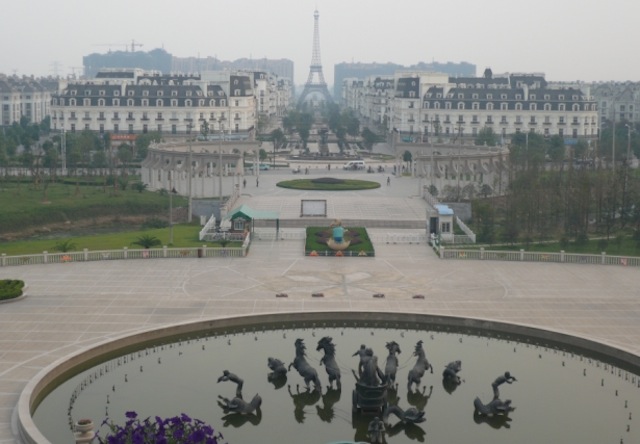
Courtesy of Bianca Bosker.
Shanghai alone has ten cities all built in the architectural styles of different European countries. Traffic permitting, it’s possible to travel from “Germany” to “Italy” to “England” in the course of a few hours.
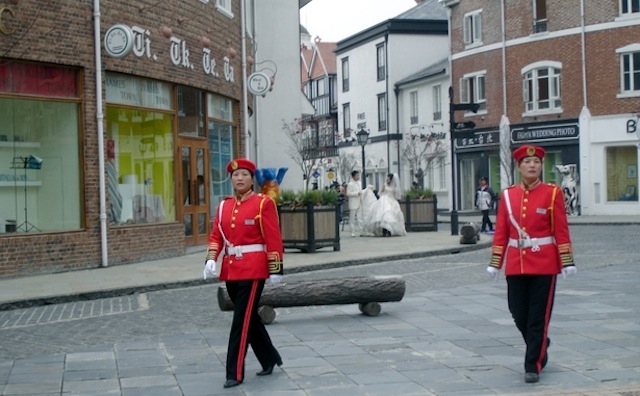
Courtesy of Bianca Bosker.
These are not theme parks or novelties like one might see in Las Vegas. Duplitecture developments are functioning communities where Chinese families are raising their children and living their lives.
These communities also differ from American Chinatowns or Germantowns, which were established by immigrants. These are Chinese communities, in American- or European-styled buildings, designed primarily by Chinese architects.
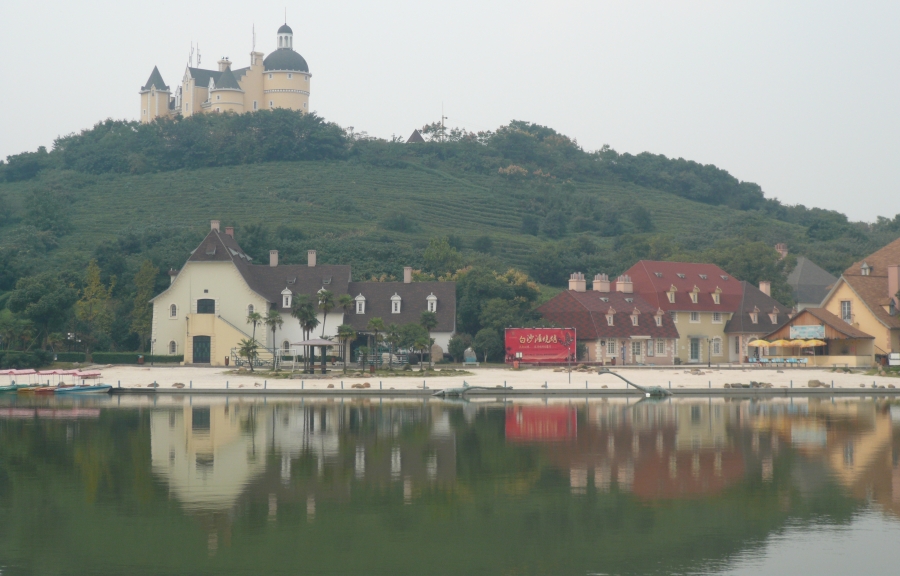
Courtesy of Bianca Bosker.
These replica buildings resemble the originals to varying degrees. The buildings might be larger or smaller than the real thing. They might be made of different materials or even painted another colour. As such, duplitecture can become a warped caricature of the original.
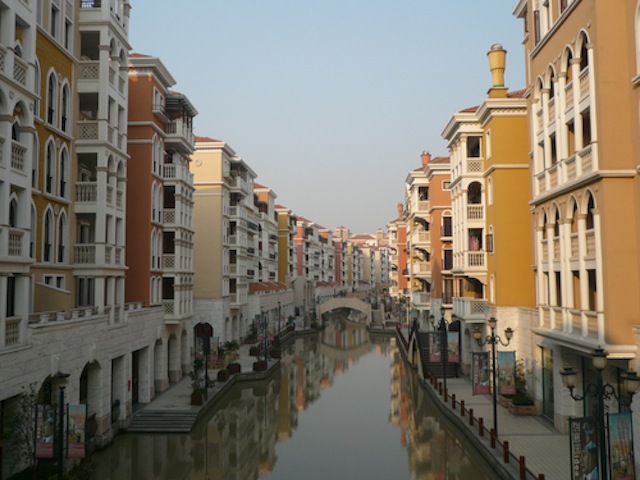
Courtesy of Bianca Bosker.
Developers take a lot of liberties with duplitecture construction, sometimes adjusting the replicas to work in accordance with the principles of Feng Shui.
Nevertheless, a lot of these duplitecture communities have rules to actively discourage any behaviour that they think might ensure that the “European feel” of the development is not disrupted.
To further create the impression of a Paris, there might be a French bakery, or a Bastille Day celebration.
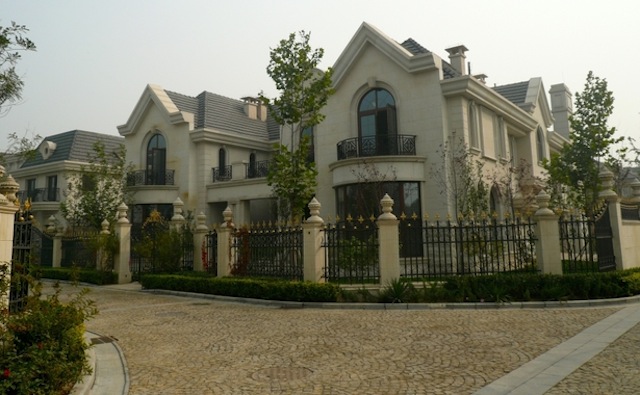
Courtesy of Bianca Bosker.
As odd and uncanny as these buildings and communities can be, duplitecture is pretty impressive. These buildings go up quickly, on a massive scale, and they show no signs of stopping. New developments are popping up around China all the time, even though duplitecture isn’t exactly a new trend.
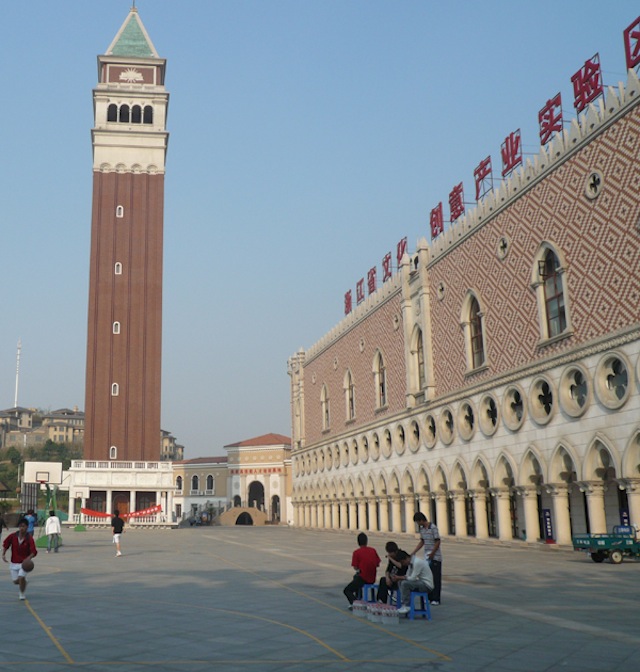
Courtesy of Bianca Bosker.
In premodern China, imperial rulers used copycat buildings to show off their authority, making replicas of landmarks in cities they had conquered, or importing flora and fauna to recreate foreign landscapes within their own domain.
In keeping with that tradition, one of the most copied buildings in China is the very seat of western power itself: the White House. Serving as hotels, restaurants, courthouses and homes, White Houses are all over China, morphed and varied in different permutations. Still, they all have those signature columns and square portico.
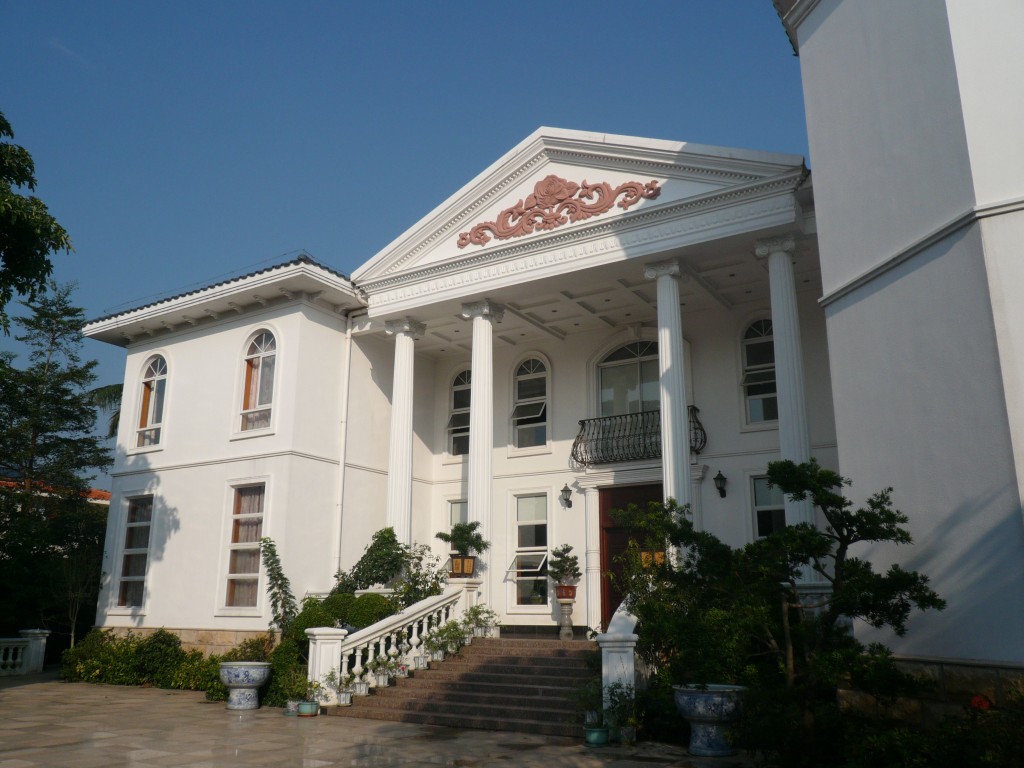
A Home in Shenzhen.

Credit: Yue Yuewei.
Though some might argue that the Chinese have taken duplitecture to a whole new level, architects have been copying each other forever, and the U.S. is no exception. The architect who built the White House based his design on The Leinster House in Dublin, which is now the seat of the Irish parliament. The Leinster House, in turn, contains strong elements of Greek and Roman architecture.
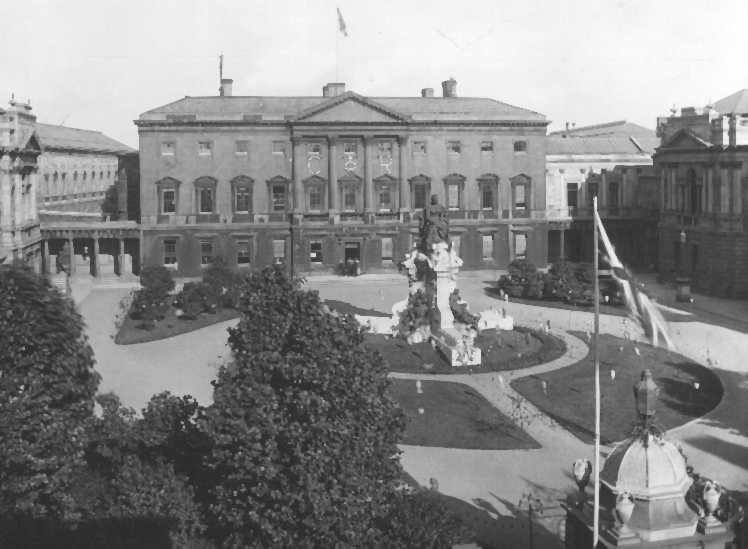
Some of the greatest hits of American architecture are copies of the greatest hits of ancient Roman architecture, which are now all being copied by the Chinese. China has proven quite successful at turning imitation into innovation in other sectors. China’s iPhone knockoffs had some features that you couldn’t find on Apple’s phone, like removable battery and multiple sim cards, all for a lower price. It’s easy to scoff at a fake Venice, but copying, as a practice, is totally underrated. Mindful iteration is often how good things become great things.
Producer Avery Trufelman spoke with Bianca Bosker, author of Original Copies: Architectural Mimicry in Contemporary China.
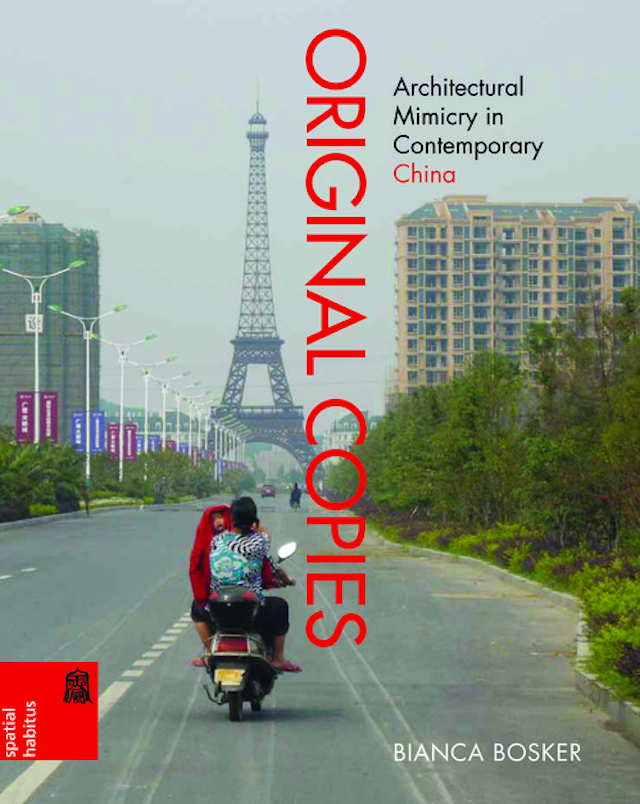
99% Invisible, the greatest podcast of all time, is a tiny radio show about design, architecture & the 99% invisible activity that shapes our world. You can Like them on Facebook here or follow them on Twitter here. To subscribe to the podcast on iTunes, head over here.
